History of anthropology by country
Anthropology is the study of various aspects of humans within past and present societies.[1][2][3] This study is practiced in multiple countries, each of whom has their own history of how anthropology has developed in their respective countries.
Latin America
Anthropology in Latin America is a well established discipline that has existed for over 100 years. The countries that are summarized in this section include Mexico, Brazil, Argentina, the Andean region, Costa Rica, and Colombia. For the moment, not included are discussions of anthropology (or ethnology) in Cuba, the Dominican Republic, or Haiti. Latin America anthropologists established their discipline in conjunction with American and European anthropologists, and revised their disciplines to study cultural phenomena through their own perspectives, independent of American and European thought.
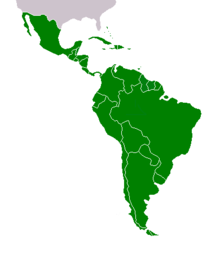
Andes
Andean anthropology's roots began during the turn of the 20th century, containing social movements between two groups in Peru, and from academia within the United States. The mestizo (non-native) and indigenous intellectuals known as indigenistas competed for political and intellectual space and recognition in Peru. Indigenous intellectuals advocated for interculturalidad, where indigenous thought could occupy Peruvian society as its own entity and not become blended as a singular national identity that the mestizaje proposed.[4]
The mestizaje perspective sought to modernize Peru and model their society similar to the United States. José María Arguedas was a writer and ethnographer in Peru, who classified himself as an indigenous intellectual that challenged Western thought and ideology. John Victor Murra, an anthropologist teaching in the United States collaborated with Arguedas. Their collaboration stemmed from Murra's travels in 1952 to the Latin American region when he was working under the anthropologist Sidney Mintz as a PhD student. Indigenistas were active in social and political movements in Latin America and collaborated with people inside of the United States, but still sought to be independent from Western thought.[4]
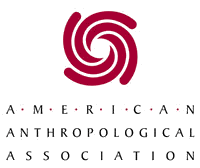
In 1936, the American Anthropological Association initiated studies in Latin America on how to incorporate indigenous people in Latin American society, termed acculturation studies, and in 1935, the Social Science Research Council, the American Council of Learned Societies, and the Committee on Latin American studies worked to benefit the interests of the United States. The Peruvian government funded anthropological institutions beginning in the 1940s, and the establishment of the Instiuto de Etnologia y Arqueologia and a Peruvian sector in the Instituto Indigneista Interamericano followed. By the 1960s Peruvian governmental funding decreased, and became reliant upon the United States for funding. The indigenous incorporation into the goal of a singular society was termed cholification by the Peruvian sociologist Anibal Quijano. In the 1990s during the Neo-liberal era, indigenous thought became more recognized with political conflicts in the Andean region, and interculturalidad was pursued again for Andean states to recognize the diversity of the people that occupied them.[4]
Argentina
Social Anthropology was established in Argentina in 1957. It was first institutionalized at the University of Buenos Aires. Before the institutionalization of social anthropology, the discipline largely focused on historical studies. Rosana Guber attributes the introduction of social anthropology to Esther Hermitte who was a history professor at the Ethnographic Museum in Argentina. It was during her trips to the University of Chicago that she was introduced to social anthropology, and so it was the west who influenced the institutionalization of social anthropology in Argentina. In 1965, students began to ask for a discipline separate from sociology, and that was not focused primarily on indigenous people. There was a movement around this time that called for a greater understanding of the changes modern society was going through, especially during and after the 1966 Revolución Argentina. Later, in 1974, students and faculty within departments that were studying social movements and change suffered kidnappings and murders by the Argentine AntiCommunist Alliance. The current status of Argentinian anthropology is still deeply rooted in western influence.[5]
Brazil
.jpg)
Anthropology in Brazil was institutionalized in 1930 at the beginning of the Vargas Era. Later during the 1950s and 1960s, Brazil was experiencing political authoritarianism. As a result, anthropology began to address inter-ethnic friction. In the 1970s anthropologists began to consider nearby urban studies as a topic of research. The 1980s kicked off a more modern type of anthropology where anthropologists began to look at themselves as “the other”. Brazil did not have an issue of alterity or exoticism, because it existed within its own borders. Brazil began to value exoticism and viewed it as the acknowledgement of cultural diversity according to Mariza Peirano. In general, the overall current goal for Brazilian anthropology was to better the future for modernization by enlightening modern political elite and identifying relevant topics for investigation. Some of Brazil's main anthropological institutions are the University of Brazil, Universidade Federal do Rio de Janeiro, and the Brazilian Association of Anthropology.[6]
Colombia
Anthropology in Colombia was institutionalized during the mid-1940s. Between the 1950s-70's, Colombian anthropologists sought to integrate into national society and began to deal with terms like culture, integration, and assimilation. However, during the 1970s, this early understanding of anthropology was opposed and anthropologists began to confront terms such as national integration because they felt it was loaded with other issues like racial supremacy. Emerging social movements encouraged this new way of thinking because it recognized the rights of peasant and ethnic populations as well as the influence of Marxism. Anthropologists continued this way of thinking through the 1980s although a larger influence from militant anthropology became apparent. By militant anthropology, Myriam Jimeno refers to anthropologists who often debate and participate, but write very little. The goal of this type of anthropology was to alter the symbols of national identity and to accompany new ethnic movements in finding representation. Anthropologists and ethnic groups aimed to challenge the way indigenous groups were being ostracized by cultural hegemony. Later on in 1991, Colombia underwent a process of constitutional reform and development in attempt to recognize more cultural and ethnic rights. Some of its current most influential institutions are the Colombian Institute of Anthropology and History, the Colombian National University, and the National Institute of Ethnology.[7]
Costa Rica

Costa Rican anthropology was institutionalized in 1967 under political influence. According to Margarita Bolaños Arquín, increasing notions of nationalism and anti imperialism led to the institutionalization of social sciences in Costa Rica. During the 1960s, around the time of institutionalization, social scientists' primary focus was on the birth and implications of social movements, as well as the consequences of modernization in rural areas. Later, French Structural Marxism influenced the social sciences to take an interest in the study of class structures. Over time, anthropology in Costa Rica was highly criticized in its struggle to find its identity. Caught in a sort of balancing act between western and Latin American practice, anthropology in Costa Rica eventually learned to take the criticisms of other anthropologies and made a name for itself with a focus on gender studies, identity studies, and developmental problems. To legitimize their discipline, anthropology contributed to other sciences such as linguistics, agriculture, and psychology. However, during the 1980s Costa Rica endured a recession, and anthropological institutions were under threat. During this time, globalization was becoming increasingly popular and while during the recession of the 1980s Costa Rica was not seen as a power player, at the start of the 1990s, the country could now participate in ways that were productive. It was not until around the 1990s that anthropologists regained the opportunity to research and, after such political and economic turmoil, there was much to question. Throughout the 1990s the focus of anthropology and other disciplines such as sociology continued to research in rural areas but shifted their research to the survival of the poor during tough economic times.[8]
Mexico
Manuel Gamio, the first Mexican anthropologist, earned his PhD in 1921, having studied under Franz Boas. The first anthropology department was established in 1938. Indigenous population studies known as indigenism, are an integral part of Mexican anthropology, and became popular during the presidency of Lázaro Cardenas, serving from 1934–1940. The National Institute of Anthropology and History was established by President Lázaro Cárdenas in 1939, and remains a prominent place of anthropological study in Latin America. The nation-building interests of incorporating the indigenous population into the Mexican state also led to the establishment of the Inter-American Indian Institute in 1942, in Mexico City, along with the establishment of the academic journal, America Indígena. Marxist theory was predominantly used to analyze social phenomena, and was combined with social evolution theory that viewed Mexico in three historical time phases: pre-Hispanic, Colonial, and Modern.[9]
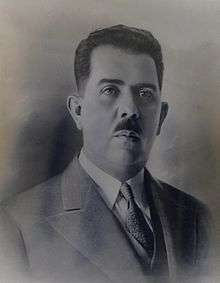
In the 1970s, Gonzalo Aguirre Beltrán, an anthropologist who was formerly a medical doctor worked for the federal government and promoted critical anthropology in Mexico that used Marxist theory and rejected imperialistic practices from the United States. Mexico's urban populations began to increase in the 1970s, which became another topic of study for anthropologists. In the 1980s, Gramscian Marxism became the theoretical center, and studies included rural and urban populations, and labor. Institutions of anthropology have continued to increase since the 1980s, offering undergraduate and graduate degrees. Neo-liberal market transformations in the 1990s have affected anthropological training presently, as students may find careers not only in the universities, but non-governmental organizations.[9]
Asia
Asia includes the countries China, Japan, Philippines, and Siberia. Anthropology in Asia has been influenced by Western anthropological ideologies through colonial contact, historically. While the discipline of anthropology is historically built from nation-building and colonization from core countries, language and publishing barriers, funding opportunities and political status all influence the structure of anthropological research in each Asian country. Anthropology in the social and cultural perspective have not always had a strong tradition in Asian anthropology, but ethnography, ethnology, and folklore often have dominant roots within the discipline.
China
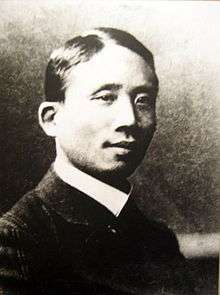
Chinese anthropology was founded by scholar Cai Yuanpei. Cai Yuanpei was a scholar educated at the University of Leipzig, and he brought both Western influence and standardization into the discipline of anthropology in China. The first department of anthropology was founded in 1928 with Cai Yuanpei's creation of Academia Sinica in Beijing. At Academia Sinica, physical anthropology and archaeology held focus.[10]
Franz Boas also brought Western influence to China, and British functionalism would make a lasting impact on Chinese anthropology. In addition to Cai Yuanpei, Wu Wenzao was one of the most influential proponents of Western-influenced anthropology, and he took classes under Ruth Benedict (one of Boas’ students that would be influential in the field of anthropology on her own overall).[11] Wu began teaching at Yenjing University in 1929, where he would influence students such as Fei Xiaotong and Lin Yaohua, who would go on to be important in the scene of Chinese anthropology.[11] Chinese Ethnological Association created in 1934, but its progress was halted by China's involvement in World War II in 1937.[11]
World War II pushed back the institutional development of anthropology in China until the late 1940s. With this revitalization, Chinese anthropologists began to look inwards at themselves for subjects of study. This inward focus led anthropologists of the time to attempt to use anthropology to better Chinese society.[11] 1940-late 1950s was a time of Soviet influence in China, followed by 1957-1977 and Mao Zedong’s era of the People's Republic of China.[10] During this time, Maoist aims supplemented ethnology and Chinese national identity creation.[10]

Post-1978 was a time of reform in China following the end of Mao Zedong's leadership. Academia was reconstructed, and anthropology subsequently saw a revival during this time. Exchanges between foreign faculty and students helped to globalize Chinese anthropology and bring in other perspectives.[10] Liang Zhaotong was an advocate for the revival of social and cultural anthropology, but for this to happen, anthropology had to be seen as a useful tool for improvements in the field of the social sciences and society.[11] Anthropology was held in lower regard than ethnology in China due to the ideology of Mao Zedong, and anthropologists left anthropology for other disciplines in social science, such as sociology, which subsequently saw a large period of development in the 1980s. This lower regard for anthropology also caused the field to receive less attention and less funding from the public and Chinese institutions.[10]
The Chinese Academy of Social Sciences (CASS) and the State Education Committee founded the Chinese Anthropological Association in 1981 (now part of the East Asian Anthropological Association). Today, anthropology in China is still influenced by its history of being less practical and less important in the field of social sciences. This causes a lack of public interest and awareness in Chinese anthropology in favor of more “professional” disciplines, such as medicine, business, law, etc.[10]
Japan
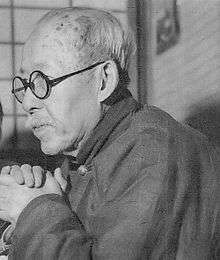
The creation of anthropology in Japan was a response to the research of Edward Morse, the first professor of Zoology at Tokyo Imperial University, where he discovered signs of cannibalism in Japan. Japanese nationalism motivated Japanese peoples to study themselves rather than being subjects of study by outsiders. This motivation led to the formation of Anthropological Society of Tokyo in 1886. Tsuboi Shôgorô was a leading member of this group, and he is named one of the founding fathers of Japanese anthropology. In 1892, he became the first professor of anthropology at Tokyo Imperial University.[12]
In 1895, the Japanese colonial empire was marked by the annexation of Taiwan and led to an increase in domestic ethnographers in this region. Torii Ryūzō was Tsuboi's successor and greatly attributed data and photographs of Taiwan during this time period. His own research abroad redirected peoples' focus from themselves, Japanese folklore-studies, to the colonial Others.[12] The expansion Japanese imperialism drove Ryūzō's research of others. This shift in research subjects created a separate discipline, ethnology or 'race studies.'[13]
In 1934, Japanese Society of Ethnology (Nihon Minzokugakkai) was formed, which separated Japanese folklore and ethnological studies from comparative ethnology.[12]
In 1968, the Eighth Congress of the International Union of Anthropological and Ethnological Sciences (IUAES) was held in Japan.
In 2004, in response to the IUAES, the Japanese Society of Ethnology changed its name to the Japanese Society of Cultural Anthropology; this is one of the largest organizations at 2,000 members.[12]
Considered to be a semi-peripheral country in comparison to the West, Japan is home to the largest number of anthropologists in Asia as well as the largest center for anthropological research in Asia.[12] Japan's history resembles a colonial power in East Asia. Currently, language and audience discrepancies hinder open conversations between Japanese and American anthropologies. Since Western academic anthropologists publish in English, their local and global audience is essentially one. In Japan, writing for a global audience requires publishing in English. While Japanese scholars are knowledgeable about Western anthropological theories and trends, institutional factors deter Japanese anthropologists to publish in English; a more extensive peer review process can delay publication approval for years resulting in outdated empirical data. Japanese academics prefer to publish in university in-house journals where there is a much shorter delay in publication approval. A local audience means publishing in Japanese and increasing the gap between world anthropologies.
Philippines
The movement of indigenization of anthropology in the Philippines challenges foreign-adopted Western concepts, theories and methods. To understand the viewpoints of this process, indigenization can be examined as a historical process, a perspective of native concepts, and as both a problem and solution created by colonial or neocolonial educational curriculum.[14]
From 1560–1898, the Philippines was under Spanish colonial regime. During this time, Spanish colonizers established society through theologoical orthodoxy. They valued their own written history over the Philippines' native traditions, and oral tradition was undermined by colonization.[14]
From 1898–1941, the second period of colonization by the United States took place. Ethnographic knowledge was established as the basis of integration of indigenous elements into mainstream Philippine society. In 1914, anthropology curriculum was established at the University of the Philippines, and three years later, an anthropology department was created. In 1921, the anthropology department at the University of Philippines merged with the sociology department.[14]
During the post-war era (1946-1968), student activism, national pride and identity reinforced the process of decolonization; the University of the Philippines was at the forefront of this movement. Filipino scholars increasingly pursued graduate programs in the United States anthropology departments. This created an issue that will be discussed further.
From 1970–1986, social and political consciousness in the Philippines marked a revolutionary period. The country adopted conflict models; Marxist ideology was more suitable for the Philippines that was in a crisis state. In the late 1970s, the Philippine Folklore Society was formed. This growth of folklore studies was due to the further development of indigenization in the Philippines. In 1977, The Philippine Anthropological Society (Ugnayan ng Agham Tao or UGAT) was founded.[14]
After 1986, this period was marked by a heightened cultural consciousness. President Corazon Aquino promoted culture through creation of the National Commission for Culture and Arts (NCCA).
The distance between native and foreign anthropologists is a conflict in the Philippines. While most scholars receive formal education in Western societies, they often return "home" and view their native society through a foreign, Westernized lens they were conditioned and educated by. Native anthropologists are hindered by a perspective based on bias. Interests, training, values, and field exposure can result in differences between foreign and native anthropologists. It is important to recognize these different angles, politics of representation, and ethnographic authority in order to successful observe others as well as our own societies.[14] Another challenge in anthropology in the Philippines is discussed by Filipino anthropologist, Carlos Jr. P Tatel, about funding for research on governmental and regional levels. He explains that anthropology proposals for funding often deviate from original plan in order to fit the agendas of agencies who grant travel and research funding.[15]
Siberia
Siberia as a territory was important in the development of Russian anthropology due to its position of alterity within Russia. Siberia and the people of Northern Russia were points of great interest throughout various periods in Russian history as it tried to better understand its own people.
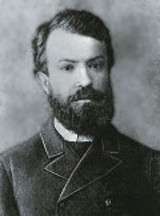
The beginnings of ethnographic research in Siberia were heavily influenced by anthropology in Germany and ideas of Russian nationalism in the 19th century.[16] The expedition led by Franz Boas, the Jesup North Pacific Expedition from 1897–1902, helped to bring international attention to the concept of doing anthropology in Siberia in relation to Russian anthropology in addition to bringing Boas’ anthropological perspective into Russia.[16] Also on this expedition were Vladimir Bogoraz, Vladimir Jochelson, and Leo Sternberg, who would be known as the founding fathers of Siberian studies, and influential ethnographers in Russia.
The nationalistic undercurrent in Russia at the time of the beginnings of researching Siberia as a place of intrigue was reflected in the Russians' attitude towards the people in Siberia. The impetus to study Siberians was rooted in the idea that one day the people in the area would all assimilate to Russian culture, and due to this, the current culture of the people should be documented and recorded.[16] Russian ideologies heavily influenced the research field in Siberia, and studying Russian and Siberian history was an easier route for research due to the uncertainty of what would be acceptable to study under the Russian government in the 19th and 20th centuries.[16] Under Soviet Russia in the early 20th century, ethnology moved toward a more lstructural and functionalist view, with the goal of generally understanding human culture.[16] When Joseph Stalin came into power, this view shifted as Stalin aimed to homogenize Russian culture and identity.[16] Ethnologists were employed by the state with a focus on understanding, regulating, and standardizing the different ethnic groups of Russia.[16]
Central and Eastern Europe
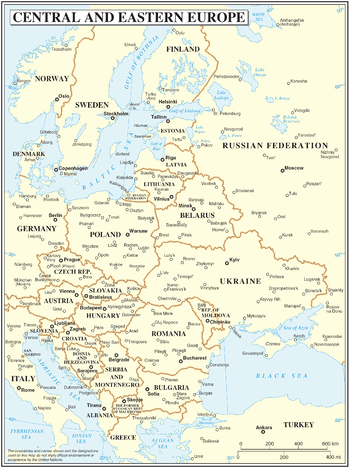
Central and Eastern Europe includes the countries of Austria, Croatia, Slovenia, Switzerland, Belarus, Bulgaria, Czech Republic, and Hungary among many others. Anthropological study is active in many places Europe through research centers, academic societies, and universities on a range of topics. One of the biggest problems facing anthropologists in Central and Eastern Europe is the need to define themselves as a discipline separate from any other.
Central Europe
Anthropology in central European countries has its roots in Germany. The establishment of anthropology within central Europe has been a slow process that involved first understanding what the discipline was and then determining how it fit within each country's individual ideals.
Austria
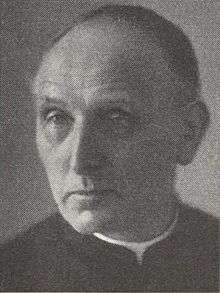
Austrian anthropology has close ties to Germany and is generally intertwined with German-speaking countries.[17][18] As such, the history of anthropology in Austria is foggy until the marked institutionalization of the discipline. The Anthropological Society in Vienna (ASV) was the first anthropological institution in Austria. It was established on February 13, 1870 and is a non-profit organization.[19][17] The “new anthropology” approach was the ASV's foundation and Bernd Weiler's term for anthropology that existed post-publication of Charles Darwin’s On the Origin of Species.[17] Anthropology within academia was postponed until 1919 when the Institute of Anthropology and Ethnography was created at the University of Vienna.[17] The institute was divided into two later, making the Anthropological Institute and Institute for Ethnology.[20] In 2005, the Anthropological Institute became the Department of Anthropology and is the only anthropology department that exists within the country.[20][17]
A notable anthropologist is Richard Thurnwald who was an Austrian-born German anthropologist and sociologist.[21] He was multilingual in Arabic, Turkish, Serbian, and Russian and a professor at universities in the United States and Germany during the early 1900s[21][22] Thurnwald was also the editor of various journals, including the one he originated, called Journal of Popular Psychology and Sociology, which was later renamed Sociologus.[21] His wife continued publishing the journal despite his death in 1954.[22] His work included the study of kinship, social structure, superstratification, feudalism, kingship, cities, and states, and western colonial expansion.[21]
Another important figure was Pater Wilhelm Schmidt who was a German-born ordained Roman Catholic priest, anthropologist, and linguist.[23] Anthropos is a journal he created in 1906 and the Anthropos Institute is an institution he founded in 1931.[23][24] He relocated both to Switzerland in 1938 due to his distaste for Hitler's ideals.[24] He was a professor at the Universities of Vienna and Freiburg, had published extensively, and his research topics included family, religion, language, and culture.[23]
Karl Franzens University of Graz’s humanities department includes the Institute for Cultural Anthropology and European Ethnology which offers bachelors, masters, and doctoral degrees in Anthropology.[25] The key topics of research the institution is involved in include “city, governmentality, limit and difference, mobilities, visual culture, material culture, museum, religiousness, and science research as well as subject-oriented methodologies.” [26][25]
Weltmuseum Wien is an ethnographic museum located in Vienna that serves to display cultural diversity.[27] Weltmuseum Wien, translated ‘World Museum Vienna’, opened in 1928 and houses worldwide artifacts, not including Europe, from as early as the 1500s.[27] The museum's previous title was the Museum of Ethnology and it recently reopened after closing for renovations in 2014.[27]
Croatia

Croatian anthropology started with a focus more on natural and medical topics because it wasn't embraced as a human-centered scientific discipline.[29] In 1973, various European anthropologists met for the first time to discuss the making of a European Association for Anthropology.[30] It wasn't until the fourth meeting in Zagreb, on October 7, 1976, that the board members established the European Anthropological Association.[30] The initial meeting triggered a chain reaction development of anthropology within Croatia because, meanwhile, in 1974, the Croatian Physicians Assembly established the section for biological anthropology.[29] Soon after, the Croatian Anthropological Society was created in 1977 along with its journal, titled Collegium Antropologicum.[29] Finally, in 1992, the Institute for Anthropological Research was established at the University of Zagreb.[31]
Slovenia
Anthropology in Slovenia has been greatly influenced by surrounding nations due to the country's small size.[32] There was a shift in language after World War II that caused German language to be controversial so English began being taught to children which later resulted in students being more interested in an ethnographic college curriculum.[32] The University of Ljubljana started offering anthropology courses in 1933 which were taught by Božo Škerlj as the first college professor to teach the subject in Slovenia.[32] Later, he created a chair in anthropology at the University of Ljubljana in 1946 that was eventually placed within the biology department; but, within a few years of his death in 1961, the subject became questioned which resulted in its being terminated.[32] However, social anthropology was already part of the sociology curriculum which was established earlier in the 1960s.[32] It wasn't until the 1990s that this branch of anthropology became an official program offered to graduate students.[32]
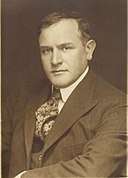
Božo Škerlj was an Austrian-born anthropologist who studied physical anthropology in Prague.[32] He was initially interested in German physical anthropology but, at the time of World War II, decided to focus on cultural anthropology instead.[32] His work reflected a combination of the two topics.[32]
Another important figure in Slovene anthropology is Niko Županić who was born in 1876.[32][33] He was the creator of the Slovene Ethnographic Museum, which opened in 1923, and the museum's corresponding journal, Etnolog, that began in 1926.[32] His educational background was in physical anthropology, archaeology, and history and, in 1940, he became a professor for the ethnology and ethnography department at the University of Ljubljana.[32] Niko Županić died on September 11, 1961.[33]
The Slovene Anthropological Society has been active since its founding in 1992 and arranges an international science conference every three years called Škerlj's days.[34] The society's journal is named Anthropological Notebooks.[34] The articles inside are preferred to be unique to the journal and they're published in English language.[35]
Switzerland
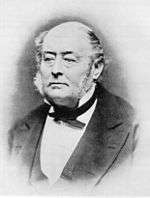
The discipline of anthropology in Switzerland, like Austria, is closely tied to Germany and German-speaking countries in general.[18] Swiss anthropology originated with studying folklore, also known as volkskunde, and ethnology, or völkerkunde.[32] Between 1912 and 1916, ethnographic museums held seminars in ethnology and folklore and were the beginning of anthropology being taught in Switzerland.[32]
Johann Jakob Bachofen, born in 1815, was a professor at the University of Basel, criminal court judge, member of city legislative council, and an anthropological writer.[36] He came from a wealthy family and was well educated in law, Philology, history and ancient history.[36] A popular, influential publication of his, titled Das Mutterrecht, explored past societies with the idea that matriarchy came before patriarchy.[36] Initially it was rejected but was later printed in 1861.[36] Bachofen published many works but none were accepted until well after his death in 1887.[36]
Eastern Europe
Anthropology in Eastern Europe varies in is roots, but many of the different anthropologies share a common interest in folklore and human populations. Eastern European anthropologists, official and non official, tend to focus on studying local issues and staying out of international affairs. The anthropological trend in Eastern Europe is a turn toward the social sciences and anthropology after separation from the Soviet Union.
Belarus
The first Belarus postgraduate training program with anthropology was in February 1965 and was at the Institute of Art, Ethnography and Folklore of the Academy of Sciences of the BSSR.[37]

After separating from the Soviet Union, Belarus went through a period of state development that lasted from about 1990 to 1994. During this time, the focus was on nation-building. This required both an institutional and ideological change from the time when Belarus was under Soviet rule. A policy of “Belarusisation” was implemented in order to bring back culture and language that was understood to be native to Belarus.[38] In 1971, anthropological research focused on the characteristics of populations within Belarus, looking at perceived internal “others”. In the 1980s, anthropologists were looking at the genetic structure of human populations based on demographics and environment, along with a study of Belarus's child population. Belarusian anthropologists also looked outside of Belarus through the Research Institute and Museum of Anthropology from Moscow State University in order to study the Chukchi, Eskimos, Kazakhs, and Khakas peoples.[37]
One important figure in Belarusian anthropology was L.I. Tegako, who is cited as being one of its founders in the National Academy of Sciences of Belarus.[37] She began research on ethnic health issues in the 1960s, which is one of the first instances of an official sort of anthropology in Belarus. Her teacher was V.P. Alekseev of Russia. From her research, she concluded that “Belarusians manage to stay within variations which are typical for Caucasian race.” Tegako took part in much of the work in the 1980s on both the genetic structure of human populations and the child studies. She also led twenty expeditions outside of Belarus.[37]
Lidiya Ivanovana is also an important character in Belarusian anthropology. She obtained her PhD in Russia in 1990 with a dissertation that looked at populations in Belarus. Her work was the first to take a multi-dimensional approach involving different types of materials from several different populations within Belarus. Ivanovana is attributed as having contributed many of the anthropological methods used in Belarus.[37]
Bulgaria

Anthropology appeared in an official status in Bulgaria in late 1989 due to the fall of the communist regime and is thought to be a product of democratization of society. The first departments to include something like anthropology were departments of ethnology, which were concerned with ethnography and folklore, and were worked in to the departments of philology or history. Anthropology itself was introduced at New Bulgarian University (NBU) as a priority, but they had to combine with a discipline recognized by the state, which like in many other cases, was the department of sociology with the degree being a sociology one. It wasn't until around 2004 that anthropology got its own department with its own degree in Bulgaria.[33]
One of Bulgarian anthropology's main focuses at first was to carve out their own niche as a discipline, especially considering that Bulgarian anthropologists come from a variety of backgrounds. They were also left with ideas from the socialist period and the fall of communism. There was also focus on the changing social conditions from the period of transition after the fall of communism. There was push for democratization in Bulgaria, and anthropology became something of a symbol for that change.[33] Despite this, there was still polarization on methods and ideology within the new discipline based on debates about Soviet versus Western styles of education, which were understood to be ideological opposites. The shift was eventually toward Western ideas. Bulgarian anthropologists tend to focus on research within their own borders, but also research in Balkans. Despite the branching out of Bulgaria, there are a limited number of field-research sites, a limited number of subjects, and a limited number of methods taken advantage of by Bulgarian anthropologists. Much attention is paid to community formation, complex societies, power, polity, statehood, nationalism, myth, ritual, religion, marriage, kinship, ethnicity, nation-hood, magic, medicine, and multiculturality.[33]
Czech Republic
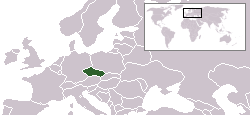
The Czech Republic takes a constructivist approach to anthropology (closely connected to ethnology), which they take a positivist approach to.[39] Ethnology is taken to be trying to get at objective truth, where anthropology is getting at social constructs and beliefs. Despite this split between ideas of ethnology and anthropology in the Czech Republic, anthropology is not yet a fully established discipline. After the split from communism in 1989, there was a turn to socio-cultural anthropology in the way of ideology, but it was inconsistent. Some academics saw it as the same thing as ethnology, while others thought of it as a different research field with different methods and traditions, which resulted in the difficulty of establishing anthropology as a discipline. Many argue for there being a real epistemological difference between the two approaches.[39]
Hungary
Hungarian anthropology is a defined discipline with its own departments and methods, though there is still overlap between anthropology and other related departments, like history and sociology.[40] Hungarian anthropology places a premium on verifying sociological and anthropological results with scientific data.[41]
_etnogr%C3%A1fus.jpg)
In 1963, the Ethnographic Research Group, which was attached to the Hungarian Academy of Sciences was founded. It was led by Gyula Ortutay and had twenty-two participating members. The research focused on Hungarian folklore, but the group also looked at peasant economy, social institutions, and Siberian tribal society. If a senior member had an interest outside of Hungary, then that was also a permissible research topic.[41] Cultural Anthropological departments were established at the University of Budapest in 1990 and the University of Miskolc in 1993.[42]
There are many places to publish anthropological works within Hungary. The majority of the work is published in languages other than Hungarian and appear mostly in European periodicals. Many of the works do not appear in American anthropological journals due to a gap in how things are understood between the two anthropological fields. Many Hungarian anthropologists believe that the methods and problems that they need to consider are within their own borders or within their own region. They tend to stay out of international problems and direct their funding toward internal concerns.[41]
Bela C. Maday points out that communication is not a strong suit for Hungarian anthropologists, which makes communicating ideas with core anthropologists, like those from the U.S. or Western Europe, difficult, but there has been much dispute on this point.[41]
Russia

The beginnings of anthropology in Russia can be traced back to the establishment of the Russian Academy of Sciences under Peter the Great in 1725.[37] Following the Academy of Sciences, many museums were also created with the impetus for studying culture, including the Ethnographic Bureau of the Russian Geographical Society in the mid-19th century.[37] The 1840s also saw the creation of physical anthropology and archaeology as sub-disciplines of anthropology.[37] In 1864 the first university department for anthropology in Russia was created at Moscow University.[37] The first specialized journal for Russian anthropology, (trans.) The Ethnographic Review (Etnograficheskoe obozrenie), was created in 1889.[37] As Russia did not have state-supplemented funding in the 19th century, much of the financial support came from aristocrats such as Count Aleksey Uvarov and Prince V. N. Tenishev.[37]
_in_Saint_Petersburg_3.jpg)
In the early 20th century, St. Petersburg and Moscow would be centers for the development of anthropology—focused on ethnology and ethnography—with the formation of the Department of Ethnology in Leningrad (1928), Museum of Anthropology and Ethnography (1924), the publication of the journal Ethnography (1926), the Anuchin Institute of Anthropology at the University of Moscow (1922), etc. Anthropology in Russia was also influenced by Western anthropological perspectives, such as Franz Boas.
Following the Communist Party takeover, Russia began to favor ethnology over anthropology. Ethnology was the study of different ethnic groups within the state, which supported the push for homogenization and national unification of the Russian state. Marxist theory replaced Western anthropological theory, and various university departments were closed as Russia experienced an ideological reconstruction.[37] In the mid-20th century, with undercurrents of the Cold War, social and cultural anthropology were rejected from ethnographic study, but ethnography was re-institutionalized and strengthened in universities and institutions across Russia.[37]
In the latter half of the 20th century, Russian ethnography to other parts of the world in which Soviet influence was strong, such as Eastern Europe. The Perestroika in 1985 led to another bout of reconstruction for anthropology, and Russian science in general. Institutes were renamed and reconfigured to match this new trend. Social anthropology also began to make a comeback, leading to identity problems for social anthropology as a discipline in a country with such a strong ethnographic tradition that had excluded it for years.[37]
The 1990s, a time of great social and political change for Russia with the end of the USSR, were a time for critical introspective views on the recent past.[37] With this, Russian anthropology turned towards more contemporary interests, where it still is today. Even with these contemporary interests, Russian anthropology still finds itself heavily influenced by the ethnology of its past and attempting to reconcile what it means to be a “social” anthropologist in this environment.[37]
Anthropology of the Arab World
The discipline of anthropology is not new to the Arab world. While there were no established anthropological institutions until the 20th century, scholars such as Abu Rayhan al-Biruni and Ibn Khaldun, are recognized for their contribution to the discipline as early as the 10th century.[43] Egypt, Palestine, and the Persian Gulf region have received most of the scholarly attention, with a particular focus on nationalism and the state. The Arab youth are a growing area of interest for anthropologists in the Arab world. Comparatively little research is done in Algeria, Tunisia, Libya, the Sudan, Syria, Jordan, and Iraq. This is in part a result of accessibility and the conditions of the states.[44] That status of anthropology in the Arab world would be labeled as peripheral in relation to anthropology in other regions of the world.
Middle East
Iran
The man known as the father of Iranian Anthropology was named Sadegh Hedayat (1903-1951). His focus was on folklore. In 1937, an institute of ethnology was founded in Iran, which then closed in 1941. It then reopened with the rise to power of Mohammed Reza Shah. From 1956 to 1959, it published a journal titled "Majalle-ye Mardomshenasi" (Journal of Anthropology). In 1957, the first anthropological elective course offered at a college level in Iran began at the University of Tehran.[45]
In the past, there was not as much of an emphasis placed on receiving degrees from foreign universities. Similarly, international research was also not highly valued. International study and research, however, has begun gaining more and more importance within the departments of anthropology in Iran. Anthropology in Iran suffers from a poor reputation in the public sphere. It is considered to be a weak discipline, according to Iranian anthropologist, Soheila Shahshahani. Perhaps because of this, most students of the social sciences tend to choose other disciplines, such as law, management, and psychology. As society changes, more attention is being paid to the field. Today, ethnographic research in the area focused on internal subjects, such as the pastoralists living in the arid areas around Iran. These studies continue today, but other fields of interest have started to emerge. A new focus on small town life and rural areas has recently developed. Professor Shahshanani states that the weakness of current anthology in Iran is the lack of theoretical work done by its practitioners. She also goes on to say that these issues could be solved by getting Iranian anthropologists who have trained elsewhere to come back and practice in Iran.[46]
Levant
Lebanon
The department of sociology at the American University of Beirut was the first to offer an anthropology course, which is listed in its 1950-51 catalogue. The department of anthropology was officially founded in the 1970s, and saw 33 students graduate with a Master of Arts degree in anthropology throughout that decade. The Lebanese Civil War, which lasted from 1975–1990, interfered with the development of the department and anthropology at the university saw a decline as a direct result. During this time, the new department of social and behavioral sciences (SBS) which already encompassed sociology, psychology, and communication, absorbed the anthropology department.[47]
During the 1980s, records show just one student having graduated with a Master of Arts degree in anthropology, while there were none in the 1990s. There were three anthropologists on the faculty throughout this time. Among them were Fuad Khuri, Martha Mundy, and Gerald Obermeyer.
A survey conducted in 1989 by Seteney Shami, a 1976 graduate of the BA program in anthropology at the American University in Beirut, sought to learn more about the teachings of anthropology at universities in the Arab world. Her findings suggested that the role of the discipline in the Arab world were minimal. In an academic report that came out in 2006, anthropologists at the same university claim to have found little evidence in the local community of any significant changes since.
Today's anthropology graduates in Lebanon have opportunities to work with local NGOs. However, for those interested in pursuing anthropology as a discipline, the West still stands as the one destination for that. Anthropology departments at the American University in Beirut, and in Lebanon, are stifled by war.[47]
As a destination for anthropologists to do research, Lebanon is among the top spots for emerging scholars in the Arab world.[48]
Palestine
Palestine has seen an increase in research conducted in the territory and among the Palestinian communities in Israel, as well as refugee camps in neighboring countries.[49]
The history of Palestinian anthropology can be marked by four modes of ethnographic engagement: Biblical Palestine, Oriental Palestine, Absent Palestine, and Post-Structural Palestine.
Biblical Palestine refers to the main method of ethnographic engagement of Palestine which took place in the first decades of the 20th century. Led predominately by Europeans, their interest was motivated by the use of the Bible as a legitimizing text to influence the region. Early work consisted of European writers fetishizing and romanticizing the land and the people based on the Biblical figures.
Oriental Palestine, a term coined by a Palestinian scholar (find scholar, cite) was the leading mode of engagement throughout the first four decades of the 20th century. It was marked by a sense of urgency to document Palestine as a source of Europe's beginnings. Through this lens, a narrative was offered that challenged the colonial British vision of Palestinian history which saw the Arabs there as "transient and ephemeral". It was also marked by a sense of duty among others to capture the traditional fabric of Palestine before its dissolution, which appeared evident at the time due to the events surrounding the rise of Zionism.
Absent Palestine follows immediately after the demise of Palestine in 1948, and can only be fully understood in terms of the success of Zionism. In this sense, the state of Palestine was eclipsed by the narrative of Israel as a place offering a safe haven to endangered refugees from Europe. This ethnographic silence of Palestinians is seen as the turning point in Israel's image of modernity.
Post-Structural Palestine is the current main method of ethnographic engagement. It is known primarily for its stance that challenges and brings to question Israel's efforts to repress Palestinian nationalism. The movement has seen a rising trend in which the Palestinian subject is explored for their national identity, rather than silenced.[50]
Turkey
Anthropology as a discipline in Turkey can trace its roots back to 1925. Developing in an nationalistic atmosphere, The Anthropology Institute, otherwise known as The Center for Anthropological Research in Turkey, was established on that year within the Faculty of Medicine at the University of Istanbul. From 1925 to the 1960s, the main topics of research centered around studies of rural and village life, with a focus on nation building. In the 1960s, a series of military coups occurred, causing considerable changes to the field and to academia itself. It was not until the year 1997 that the first official department of anthropology was established in Turkey, at the private Yeditepe University in Istanbul. As of 2010, 6 of the 53 state universities in Turkey offered training in anthropology. In contrast to this, only one of the 24 private universities offer similar training. The first anthropological association in Turkey was founded in 1992.[51]
Persian Gulf
Saudi Arabia
Many Anthropologists investigate the tribal system in Saudi Arabia. Anthropology was not popular in many countries; however, the Universities in Saudi Arabia are adopting Anthropology.
- What is the opposite of the impression of tribes is the ideology of regression. The idea that the tribe gets its meaning from the patriarchal descent. Which is now called Saudi genealogy. One of the famous genealogy is Hamad Aljassar who dead in 2000(Alshamlan).
- Golf scholars are interested in how migrants and other racial groups are racialized by the legal system. They are also interested in examining the built environment, the history of the transnational connection and the rapid social change (Deep & Winger).
United Arab Emirates
Anthropological studies, which are concerned with the privacy of the UAE community with a tribal background are rare and limited.
- Most of the studies are written with other international anthropologists such as the ethnographic observations of a British Anthropologists Bertram Thomas.
Tribes are the most form of UAE. Many anthropologists are interested in investigating the form of tribes. Many of the Arab states of the Persian Gulf are also based on the tribal system.
- Moreover, there are many migrants in UAE from two sides: The first side is the center and the south of the Arabian Peninsula. The second side of the eastern coast of the Persian Gulf, contains many foreign migrations from the neighboring countries of Asia. There are also migrants from Iran. The main intention of those migrants is settling in UAE.
- The UAE community is a multi-tribal community. A multi-cultural community that divides communities into socially and economically linked in different sectors of the workforce(Alsnagry).
Qatar and Bahrain
In Qatar and Bahrain, anthropology was not as popular as other fields, like many other countries in the Persian Gulf region. Anthropology is expanding in educational aspect. Many anthropologists are also concerned on the structure of the tribes in the Arab countries in the Persian Gulf region (Gardner).
North Africa
Egypt
Within the Arab-majority countries, Egypt, has established itself among the other Arab-majority countries as the main hub for anthropologists in the region, with Cairo being the center for most of this attention. The rest of the country remains relatively understudied. Increased attention to Cairo can be attributed to the rise of anthropological interest in cities, particularly to the diverse interdisciplinary scholarship.
The centrality of Middle East area studies is largely responsible for the increase in anthropological attention towards Egypt. In addition to this is the accessibility of institutional support for US scholars.[52]
As of the early 21st century, the relationship of Egypt with anthropology remains under question. Egyptian anthropologist, Hania Sholkamy, remarks that there are four main points that shape this ongoing relationship: the relationship of methods to theory, the relationship between methods and their analysis, the relationship of culture to its determinants, and the relationship between having data and being able to evaluate it.
The discipline of anthropology is in a constant state of judgment within Egypt, particularly when compared with the discipline of demography. The qualitative data more common in demography is given more attention than the theoretical and analytical methods associated with anthropology.
Morocco
In Morocco, topics of anthropological research include the ethnicization of Jews, the construction of ethnicity among Berber, Arab, and Haratine groups through agricultural practices, and how Berber ethnicities are politicized in ways that create raced and gendered notions of homeland.[53]
Africa
The region of Africa has had a long history of being colonized by others in economic and cultural ways, which is why the study of anthropology in Africa is a relatively new discipline that is usually grouped with historical work. Before becoming a discipline in the region, Western anthropologists came to the area to study and conduct ethnographies pertaining to the native culture of those who inhabited the area. Anthropologists in African academia are still on looking for what anthropology means to them.[54] While anthropology was initially used by states to gain knowledge about local cultures, it was later seen as a way to help them. After the recognition of its importance many universities and associations have institutionalized departments, journals and conferences to carry out this work.[55] This article includes the history, development, and future of African Anthropology in different regions.
East Africa
Kenya
_(-mini_map_-rivers).svg.png)
Anthropological study in Kenya, like many other parts of Africa, was dominated by foreign British academia.[56] They were focused on studying the “other” and understanding them for state purposes. This era is known as the pre-independence period.[56] There were very little local anthropologists after independence in 1963 until the 70s.[56] The post-colonial era was filled with distrust for the subject of anthropology because of its link to previous colonizers.[56] The East African Anthropological Association (EAAA) was founded in 2001 archaeology.[57] This association was used to promote and unify anthropologists in East Africa and work towards a common goal. The EAAA was working to develop better programs in universities and create local opportunities for meetings within anthropological communities.[57] It works with the Pan African Anthropological Association as well as many others in order to come up with ways to improve the country that they live in.
Growth and Development

The growth and development of anthropology in Kenya was largely due to colonialism of the late nineteenth and early twentieth centuries, but as an actual discipline in the region, it wasn't well developed until the 1980s.[58] In 1938, the subject of anthropology became locally known through Jomo Kenyatta, who wrote and published Facing Mt. Kenya, which was the first time any article was published from a native's perspective.[58] The methodology of anthropology in Kenya is neither strictly Kenyan, nor is it strictly Euro-American, but rather a combination of the various methods between the nations.[58] Due to the variety of methods that were being taught worldwide, as well as the education development in Kenya, it was decided to create formal training for the discipline.[58] There's evidence of this from their two major universities of the University of Nairobi and Moi University.[58] The University of Nairobi tended to disciplines of archaeology and anthropology, but taught them as separate departments, similar to England's separation of the departments; and Moi University tended to the same disciplines of archaeology and anthropology, but taught the disciplines together in the same department of Anthropology, as is taught in the U.S.[58]
British and German Studies
The majority of British, as well as German, anthropologists dominated Kenya with their studies focusing solely on the groups of people who were considered to be distinct, or “otherly”.[58] While some anthropologists studied these groups in order to achieve dominance over them, other anthropologists reasoned studying the communities for educational purposes before their culture no longer existed due to colonizing.[58] Thus, causing a means for Kenya anthropologists to disassociate with colonialism because of its harsh effects on Africans and their culture.[58] This forced the local anthropologists to rethink about socio-cultural studies, including their own discipline and how it aided in colonialism.[58] Even Jomo Kenyatta, who had benefited from his education and studies, was struggling with the decision on whether to associate with the discipline anymore.[58]
_Mary_Douglas_Nicol_Leakey_(1913-1996)_and_her_husband_Louis_Seymour_Bazett_Leakey_(1903-1972).jpg)
Louis Leakey aided in bringing archaeology and physical anthropology to light in Kenya. He work as a curator in the Coryndon Memorial Museum, which is an important establishment that helps to keep excavation sites accessible, such as Koobi Fora, Olorgesailie, and the Hyrax Hill, to both local and foreign archaeologists.[58] In the 1950s, alongside his wife, Leakey found various primate fossils, including those of Australopithecus Boisei (1959), Homo Habilis (1964), and Kenyapithecus (1967).[58] In 1960, he established the Institute of Primate Research (IPR) which helped in comprehending human evolution and biomedical research for health challenges in Africa, such as HIV/AIDS.[58]
Teaching and Education

Since the discipline of anthropology was associated with colonialism, the nation-state of Kenya did not identify with its trajectories and could not support it.[58] It wasn't until Daniel Arap Moi, who succeeded Jomo as president, made culture a central means for socio-economic aspects, making anthropology slowly begin to gain popularity again among locals due to its national cultural ethos.[58] In 1965, the University of Nairobi established its Institute for Development Studies which contained two aspects of social science and cultural divisions.[58] The social science aspect of the department went on to develop its own Institute of Development Studies, which carried out economic development but through a multidisciplinary approach.[58] The cultural divisions aspect used resources that informed university students, as well as regionally, from a cultural instruction perspective.[58] In 1970, the two subjects came together and were known as the Institute of African Studies (IAS), in which students researched in African archaeology, history, social anthropology, musicology, linguistics, oral literature, traditional arts, crafts, and social systems;[59] this institute even contributed to some of the top scholars such as musicologists P.N. Kavyu and Washington Omondi, historians H.S.K. Mwaniki and William R. Ochieng’, and writers Okot p’Bitek and Taban lo Liyong.[58] In 1986, the IAS had established its first anthropology training program, providing courses of medical, linguistic, economic, and ecological anthropology and material culture (Amuyunzu-Nyamongo, 2006).[58][60]
Anthropological Future
The future of the discipline of anthropology consists of research projects dedicated to resolving health issues, such as malaria and HIV/AIDS, so it is not a surprise that most anthropologists in Kenya today are either medical anthropologists or those anthropologists who study medical issues.[58] Many of these local anthropologists are sought out for help by national non-government health organizations, like United State Agency for International Development, Family Health International, Engenderhealth, PATH, Population Council, African Population and Health Research Center, African Medical Research Foundation, the World Health Organization and the Ford Foundation.[58] Kenyan anthropologists do not conduct research for personal needs, but for needs of their nation-state and those funding agencies that they provide information to for health resolutions.[58] In response to this upcoming need, universities are developing programs, like Anthropology in Developing Countries, Applied Anthropology, Medical Anthropology, and Anthropology and Infectious Diseases, that educate for cultural developmental skills.[58]
West Africa
Cameroon
Before Cameroon was split by the British and French in 1915 it was under the control of the German government since 1884.[61] Very little Anthropological work was done until this time when the state recognized how useful knowing more about its people would be. Phyllis Kaberry and Elizabeth Chilver were two prominent researchers in West African area in the min-1900s.[62] Kaberry, a trained anthropologist from England, studied women in a local tribe from the "grassfields" of Cameroon.[62] She also co-wrote several books and papers on topics concerning female roles in specific African cultures.[62] In 1973 the first institute in Cameroon with an anthropology department was established. In 1978 departments that were seen as not practical were starting to be eliminated.[61] After closing, reopening, and hiding within other departments, Anthropology was finally on the rise in the early 1990s.
Teaching
The University of Yaoundé-I is a main institution in the area providing students with opportunities to gain degrees in Anthropology.[61] Other Institutions of importance are the University of Ngaoundere and the University of Buea which in 1992 added anthropology departments.[62] Both of these universities produce scholars from the local communities and they promote research that is of common interest to the area. Language being a barrier in academia until its independence, in 1960, where universities were fashioned in the European style of education systems.[61] The University of Buea, a public university, offered the subjects in the English language which increased the number of local students that attend. Largely associated with sociology, the first person to gain a PhD in Social Anthropology from Cameroon was Paul Nkwi in 1975. In 1993, a B.A. in anthropology could be received form the University of Yaoundé.[62]
Research
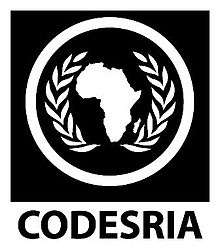
A stepping-stone organization was CODESRIA, which was an organization that helped develop and promote anthropology as an institution.[61] It facilitated the establishment of the Pan African Anthropological Association (PAAA) in the 80s.[61] The PAAA is cooperative movement that unified Anthropologists from all over Africa. Its goal was to make anthropology known again as a useful and essential department that Africa needed.[61] This association is holding conferences annually, starting in 1989, to advance Anthropology and find ways to solve problems for the future.[61] Some dominant research topics in the area are witchcraft, chiefdoms, health, violence and ethno-history.[62][61] The PAAA started encouraging communication of cross disciplines to benefit Africa as a whole by discovering new ways of resolving issues.[61] A leading journal in Africa is the African Anthropology, now known as The African Anthropologist, allows research from all over Africa to be shared and more easily accessible.[61]
Southern Africa
Stellenbosch/Western Cape
.svg.png)
History
The history of the discipline of anthropology in South Africa comes from the result of political and ideological interpretations of the research there.[63] In the 1920s, the South African Association for the Advancement of Science was established, and it was here that anthropology was known.[63] Presentations were given by archeologists, linguists, anthropologists, and ethnologists; there was also a South African Journal of Science that many researchers published in as well.[63] During the years of the 1940s to the 1990s, anthropology grew to be less popular due to the apartheid period, which in educators had strict guidelines as to what they could and couldn't teach in the classroom, and they were not permitted to teach anything else but that particular curriculum.[63]
Anthropological studies and research were offered at sixteen different universities, in which sociocultural anthropology and archaeology were offered within the discipline, and in another department, linguistics, African studies, and Gender studies were linked in the discipline.[63] Instead of using the word or teaching anthropology, the universities, more specifically Stellenbosch University, taught volkekunde, which means knowledge about people, and it was first known from pre-WWII German passage that was written by Völkerkunde.[63] This expansion of the discipline was also known as ethnology or cultural anthropology, and it was paired with aspects of the apartheid period.[64] This caused a division between social anthropology and volkekunde, as well as Afrikaans-medium universities and English-medium universities, respectively.[63]
Stellenbosch University and South African Relationship with the U.K. and U.S.
Stellenbosch University (an Afrikaan-medium university) had established its first anthropological department due to Werner Eiselen, who was the Permanent Secretary in the National Department of Native Affairs, as well as being a developer of the concept of apartheid, with Hendrik Verwoerd being his partner.[65] There were then new universities that were built in the 1960s, specifically for black students, which led to the continuation of the two types of universities within the area.[63] The professors who obtained jobs at the new universities had a background that dealt with a volkekunde style of teaching anthropology. This entire movement didn't appeal to those who identified themselves as social anthropologists in the discipline.[63]
Even with this division of the methods to anthropological research, there was a mutual respect and influence for social anthropological studies that were being conducted by researchers in the U.K., as well as the U.S. Most students were moving on to proceed in getting their doctoral degrees preferred to attend the University of Cambridge, due to its influence of academia through anthropologists who were South African natives, such as Meyer Fortes, Isaac Schapera, and Max Gluckman. South African anthropologists, such as Jean Comaroff and John Comaroff and Namibian-born Rob Gordon, who began their studies in their home region of South Africa, and more specifically at the Afrikaans-medium University of Stellenbosch, also had influence with the U.S. in their research.[66]
Self-Exile and Volkekunde Conference

In the 1960s, South African anthropologists made the decision to start leaving their country for careers and research studies because of the apartheid methods, the inequality within their societies, and there was an increase in the violence that was surrounding the region. In 1967, a committee was formed in order to begin negotiating anthropological conferences that were held at the University of South Africa, which added to the separation and tension of the social anthropologists and those who studied volkekunde.[63] Ten years later, black anthropologists started to attend these conferences, and this made the volkekunde group to initiate another new conference that was only to host research projects to those studying ethnology; this new conference was known in the Afrikaans language as Vereniging van Afrikaanse Volkekundiges, which is translated to mean Association of Afrikaans Ethnologists.[63] This conference excluded entry to those who did not speak the original Afrikaans language of South Africa, or the regional state area, and it continued to have majority and favor until the 1980s when the social anthropologists decided to have their own conference as well.[63]
Social Anthropology Conference
The Association for Anthropology in Southern Africa (AASA) was established in 1987 excluded membership into the group for those who believed in the apartheid concepts. Before anyone could become members of the conference, they were to sign a document, or a contract, saying that they reject any and all apartheid theories and concepts.[63] Regardless of this new conference, the methods of volkekunde remained to be prominent in the discipline of anthropology, though during the 1980s, the anthropology department of then known Rand Afrikaans University, which was one of the newer White Afrikaans-medium universities in the area, officially denounced volkekunde as their way of research, in fact, the entire teaching department of this discipline turned their backs to apartheid concepts entirely.[63] Later on, Stellenbosch University, which was where the first volkekunde department to be established, was closed down in the mid-1990s. A few years afterward, the discipline of social anthropology was introduced within the Department of Sociology.[63]
The new association of Anthropology South Africa was a cause to link the two distinguished branches of volkekunde and social anthropology. Its first annual conference was in 2001. In 2004, it became one of the founding members of the World Council of Anthropology Associations in Brazil.[63] There aren't very many volkekundiges, or ethnologists, who have membership within the ASnA, nor do most of them attend any of the conferences that are held. A majority of those who do attend the annual conference are young, predominantly black, postgraduate anthropologists, but there are also a growing number of faculty members from the South African University anthropology programs who participate as well.[63] Though the faculty participation numbers are growing, the overall number of memberships within the ASnA fluctuate from year to year. This is due to postgraduates, who are members only having a membership for a year or two in order to obtain their dissertations.[63] There is also a close link between membership and conference attendance, meaning that since the conferences are held in venues that are less accessible or less desirable, this doesn't attract many anthropologists to participate and fewer people sign up for memberships.[63]
Topics of Research and Publication
Some of the topics of research for sociocultural anthropologists in South Africa consist of medical anthropology, mostly concerning the HIV/AIDS pandemic in the region, development anthropology, urbanism, science and natural resources, conflict, violence and policing, human rights, identity politics and belonging, and popular culture.[63] There isn't much attention paid to subjects, such as economic anthropology, state formation, and religion and religious movements.[63]
Anthropologists at South African universities mostly publish to edited volumes and special theme collections in interdisciplinary and disciplinary journals in their own country, as well as internationally.[63] One significant publication venue for South African anthropologists is the journal formerly known as the volkekunde's Tydskrif van Suid Afrikaanse Volkekunde, which translates to Journal of South African Ethnology.[63] The journal changed its name to Anthropology Southern Africa in 2002.[63]
Postcolonial African Anthropology
The Future of the Discipline
Anthropologists, who studied in Africa and began their research from basic curiosities, cannot be of aid to how the discipline stays in existence.[54] Anthropology thrived from outside and inside perspectives of the same region or aspect of culture; having a missions civilisatrice perspective divided observer and participant, instead of taking into consideration the culture within the region from the perspectives of those who have lived there.[54] The aspect of not being able, or not wanting to, collaborate with natives from the country was due to the Malinowskian model.[54] Researchers developed their own personal objectives and reasoning to what and who they were observing in the field.[67] This caused an explicit division of Africa into several regions based on finding and observing the exotic “Other” from various basis of culture, race, and location.[68][69] The concept of reflexivity helped anthropologists to realize that their personal needs and reasoning for research correlated with the aspect of seeing people differently instead of similarly.[54] There was no insight from those who had inhabited the continent for centuries, and the country is not well represented.[54] There was not a lot of support for methods that contradicted what had already been practiced and known within the discipline.[54]
Universally, there were various debates about the methodology of the discipline in relation to folklore, co-production with aid of natives, and boundaries within the field.[54] These aspects had not been taken into consideration when observing the region. Anthropology surviving in Africa were due to not observing Africa explicitly as scientific (racially or geographically), not seeing African identities and cultures as scientific, redefining the Malinowskian model, and making the methods of fieldwork and participant observation more flexible.[54] Native anthropologists called for creative diversity and outsider anthropologists to observe themselves and how they contributed to the professional collaboration with those who were native to the region.[54] This methodology or concept did not replace outside methods, but correlated the two methods together in knowledge about culture.[54]
References
- "anthropology". Oxford Dictionaries. Oxford University Press. Retrieved 10 August 2013.
- "anthropology". Encyclopædia Britannica. Retrieved 23 March 2015.
- "What is Anthropology?". American Anthropological Association. Retrieved 10 August 2013.
- Ribiero, Gustavo; Escobar, Arturo (2006). "The Production of Other Knowledges and Its Tensions: From Andeanist Anthropology to Interculturalidad?". World Anthropologies: Disciplinary Transformations within Systems of Power. Marisol de la Cadena. New York, New York: Berg. pp. 201–224. ISBN 9781845201913.
- Guber, Rosana (2013). Boscovik, Alexander (ed.). Committed or Scientific? The Southern Whereabouts of Social Anthropology and Antropologia Social in 1960-70 Argentina. Berghahn Books. pp. 110–124.
- Boskovic, Alexander (2013). Other People's Anthropologies: Ethnographic Practice on the Margins. Mariza G.S. Peirano. Berghahn Books. pp. 186–198.
- Poole, Deborah (2008). A companion to Latin American anthropology. Jimeno, Myriam. Malden, MA: Blackwell Pub. pp. 72–89. ISBN 978-0631234685. OCLC 165081955.
- Bolanos, Margarita (Fall 2002). "Costa Rican Social Anthropology in the Central American Context at the End of the Twentieth Century". Practicing Anthropology. 24 (4): 17–21. doi:10.17730/praa.24.4.yu20r31583757427.
- Ribeiro, Gustavo; Escobar, Arturo (2006). "Mexican Anthropology's Ongoing Search for Identity". World Anthropologies: Disciplinary Transformations within Systems of Power. Esteban Krotz. New York, New York: Berg. pp. 87–109. ISBN 9781845201913.
- Smart, Josephine (February 2006). World anthropologies : disciplinary transformations within systems of power. Ribeiro, Gustavo Lins., Escobar, Arturo, 1951-. Oxford, UK. pp. 69–85. ISBN 9781845201913. OCLC 62324831.
- Liu, Xin (2004). The making of anthropology in East and Southeast Asia. Yamashita, Shinji., Bosco, Joseph, 1957-, Eades, J. S. (Jeremy Seymour), 1945-. New York: Berghahn Books. ISBN 978-1571812599. OCLC 55146652.
- Bosco, Joseph; Eades, J.S.; Yamashita, Shinji (2004). The Making of Anthropology in East and Southeast Asia. United States: Berghahn Books. p. 2. ISBN 978-1-57181-259-9.
- Shimizu, Akitoshi; van Breman, Jan (1999). Anthropology and Colonialism in Asia and Oceania. Curzon Press. ISBN 978-0-7007-0604-4.
- Yamashita, Shinji, et al. “Towards Indigenization: Responses, Challenges, and Experiences in the Philippines.” The Making of Anthropology in East and Southeast Asia, Berghahn Books, 2004, pp. 335–353.
- Tatel, Carlos Jr. P. (2017). Video Interview. Missing or empty
|title=(help) - Vakhtin, Nikolai (February 2006). World anthropologies : disciplinary transformations within systems of power. Ribeiro, Gustavo Lins., Escobar, Arturo, 1951-. Oxford, UK. pp. 49–65. ISBN 9781845201913. OCLC 62324831.
- Ranzmaier, Irene (2011). "The Anthropological Society in Vienna and the Academic Establishment of Anthropology in Austria, 1870-1930". Histories of Anthropology Annual. 7 (1): 1–22. doi:10.1353/haa.2011.0007.
- Karstedt, Lars (2002). "The History and Status of Linguistic Anthropology in Germany, Austria, and Switzerland". Journal of Linguistic Anthropology. 12 (1): 72–87. doi:10.1525/jlin.2002.12.1.72.
- "History and goals of the anthropological society". Geschichte. Retrieved 15 November 2017.
- "History". www.anthropology.at. Retrieved 15 November 2017.
- "Richard Thurnwald". Encyclopedia Britannica. Encyclopædia Britannica, inc. Retrieved 16 November 2017.
- "SP Richard Thurnwald". www.germananthropology.com. Retrieved 2017-12-04.
- The Editors of Encyclopædia Britannica (September 26, 2011). "Wilhelm Schmidt". Encyclopædia Britannica. Retrieved November 16, 2017.
- "ANTHROPOS - Anthropos Institute". www.anthropos.eu (in German). Retrieved 2017-11-16.
- "Studieren - Institut für Kulturanthropologie und Europäische Ethnologie". kulturanthropologie.uni-graz.at (in German). Retrieved 14 November 2017.
- "Forschen - Institut für Kulturanthropologie und Europäische Ethnologie". kulturanthropologie.uni-graz.at (in German). Retrieved 14 November 2017.
- Wien, Weltmuseum (14 November 2017). "Weltmuseum Wien: About us". www.weltmuseumwien.at. Retrieved 14 November 2017.
- Konecki, Mario Konecki, Mladen. "About University". www.unizg.hr. Retrieved 2017-12-05.
- "Croatian Anthropological Society". Croatian Anthropological Society. Retrieved 2017-12-04.
- "European Anthropological Association". eaa.elte.hu. Retrieved 2017-12-04.
- "HISTORY OF THE INSTITUTE | Institute for Anthropological Research". www.inantro.hr. Retrieved 2017-12-04.
- Educational histories of European social anthropology. Dracklé, Dorle., Edgar, Iain R., Schippers, Thomas K., 1954-. New York: Berghahn Books. 2003. pp. 116, 140. ISBN 978-1571819055. OCLC 50204263.CS1 maint: others (link)
- umetnosti, Slovenska akademija znanosti in. "Županič, Niko (1876–1961) - Slovenska biografija". www.slovenska-biografija.si (in Sinhala). Retrieved 2017-11-17.
- "Slovene Anthropological Society - Culture of Slovenia". www.culture.si. Retrieved 2017-12-04.
- "Društvo antropologov Slovenije". www.drustvo-antropologov.si. Retrieved 2017-12-04.
- Peter., Davies (2010). Myth, Matriarchy and Modernity : Johann Jakob Bachofen in German Culture. 1860-1945. Berlin: Walter de Gruyter. pp. 7, 8, 9, 11. ISBN 9783110227093. OCLC 645093022.
- Hurbo, Tatyana (2016). "The Contribution of L.I. Tegako to Anthropology of Belarus". Journal of the Anthropological Society of Serbia. 51: 81–87.
- Bekus, Nelly (2014). "Ethnic Identity in Post-Soviet Belarus: Ethnolinguistic Survival as an Argument in the Political Struggle". Journal of Multilingual and Multicultural Development. 35 (1): 43–58. doi:10.1080/01434632.2013.845197.
- Jakoubek, Marek (2016). "Anthropology in Eastern Europe Between Positivism and Constructivism: A Case from the Czech Republic". Anthropological Notebooks. 22 (3): 25–45.
- Keen, Mike; Mucha, Janusz (2004). "Sociology in Central and Eastern Europe in the 1990s: A Decade of Reconstruction". European Societies. 6 (2): 123–147. doi:10.1080/14616690410001690736.
- Bokonyi, Sandor; Hofer, Tamas; Kiszely, Istvan; Szepe, Gyorgy; Maday, Bela (February 1970). "On Hungarian Anthropology". Current Anthropology. 11 (1): 61–65. doi:10.1086/201095.
- Three social science disciplines in Central and Eastern Europe : handbook on economics, political science and sociology, 1989-2001. Kaase, Max., Sparschuh, Vera., Wenninger, Agnieszka., Gesellschaft Sozialwissenschaftlicher Infrastruktureinrichtungen., Collegium Budapest. Berlin: Social Science Information Centre (IZ). 2002. ISBN 978-3820601398. OCLC 63116730.CS1 maint: others (link)
- Chaabani, Hassen. "Insights on the history of Anthropology" (PDF). ata.org. International Journal of Modern Anthropology. Retrieved 5 December 2017.
- Deeb, Laura; Winegar, Jessica. "Anthropologies of Arab-Majority Societies" (PDF). anthropology.northwestern.edu. The Annual Review of Anthropology. Retrieved 5 December 2017.
- Shahshahani, Soheila (1986). "History of Anthropology in Iran". Iranian Studies. 19 (1): 65–86. doi:10.1080/00210868608701669.
- Dominguez, Virginia; Metzner, Emily. "An Interview With Iranian Anthropologist Soheila Shahshahani". American Anthropologist. doi:10.1111/aman.12534.
- King, Diane E; Scheid, Kirsten. "Anthropology in Beirut". academia. Retrieved 5 December 2017.
- Deeb, Laura; Winegar, Jessica. "Anthropologies of Arab-Majority Societies" (PDF). anthropology.northwestern.edu. The Annual Review of Anthropology. Retrieved 5 December 2017.
- Deeb, Laura; Winegar, Jessica. "Anthropologies of Arab-Majority Societies" (PDF). anthropology.northwestern.edu. The Annual Review of Anthropology. Retrieved 5 December 2017.
- Furani, Khaled; Rabinowitz, Dan (2011). "The Ethnographic Arriving of Palestine". Annual Review of Anthropology. 40: 475–491. doi:10.1146/annurev-anthro-081309-145910.
- Bošković, Aleksandar. Other People's Anthropologies: Ethnographic Practice On The Margins. New York: Berghahn Books. pp. 110–123.
- Deeb, Laura; Winegar, Jessica. "Anthropologies of Arab-Majority Societies" (PDF). anthropology.northwestern.edu. The Annual Review of Anthropology. Retrieved 5 December 2017.
- Deeb, Laura; Winegar, Jessica. "Anthropologies of Arab-Majority Societies" (PDF). anthropology.northwestern.edu. The Annual Review of Anthropology. Retrieved 5 December 2017.
- Nyamnjoh, F. (2012). "Blinded by Sight: Divining the Future of Anthropology in Africa". Institute of African Affairs at GIGA.
- Ribeiro, Gustavo Lins; Escobar, Arturo (February 2006). World anthropologies : disciplinary transformations within systems of power. Ribeiro, Gustavo Lins., Escobar, Arturo, 1951-. Oxford, UK. ISBN 9781845201913. OCLC 62324831.
- Nyamongo, I. (2007-01-01). "Teaching and training in Anthropology in Kenya: The past, current trends and future prospects". African Anthropologist. 14 (1–2). doi:10.4314/aa.v14i1-2.57726. ISSN 1024-0969.
- Ntarangwi, Mwenda (2002-01-01). "Revitalizing Anthropology in East Africa: The Birth of EAAA". African Anthropologist. 9 (1): 60–65. doi:10.4314/aa.v9i1.23070. ISSN 1024-0969.
- MacClancy, Jeremy (2009-07-01). "Other People's Anthropologies: Ethnographic Practice on the Margins. Aleksandar Bošković". Journal of Anthropological Research. 65 (2): 338–340. doi:10.1086/jar.65.2.25608213. ISSN 0091-7710.
- Ogot, B.E. (1999). "Building on the Indigenous: Selected Essays 1981-1998". Kisumu: Anyange Press.
- Amuyunzu-Nyamongo, M. (2006). Challenges and Prospects for Applied Anthropology in Kenya. African Anthropology: History, Critique, and Practice.
- Nkwi, Paul (2006). "Anthropology in a Postcolonial Africa The Survival Debate". In Ribeiro, Gustavo; Escobar, Arturo (eds.). World Anthropologies Disciplinary Transformations within Systems of Power. New York, New York: Berg. pp. 157–178.
- Fokwang, Jude (September 2005). "Cameroonising Anthropology: Some Trends and Implications". The African Anthropologist. 12 (2): 181–198.
- Spiegel, Andrew D.; Becker, Heike (2015-12-01). "South Africa: Anthropology or Anthropologies?". American Anthropologist. 117 (4): 754–760. doi:10.1111/aman.12353. hdl:10566/3043. ISSN 1548-1433.
- Kuper, Adam (2005). ""Today We Have Naming of Parts"". Today We Have Naming of Parts. pp. 277–299. doi:10.1215/9780822387107-012. ISBN 9780822387107.
- Sanders, Todd (1998). "Review of Imperfect Interpreters: South Africa's Anthropologists 1920-1990". The Journal of the Royal Anthropological Institute. 4 (4): 811–812. doi:10.2307/3034850. JSTOR 3034850.
- Gordon, Robert (2014-04-03). "Inside African anthropology: Monica Wilson and her interpreters". Anthropology Southern Africa. 37 (1–2): 135–138. doi:10.1080/23323256.2014.940183. ISSN 2332-3256.
- Faris, Wendy B.; Clifford, James (1992). "The Predicament of Culture: Twentieth-Century Ethnography, Literature, and Art". Comparative Literature. 44 (2): 221–222. doi:10.2307/1770355. JSTOR 1770355.
- Gupta, Akhil; Ferguson, James (1997). Beyond "Culture". pp. 33–51. doi:10.1215/9780822382089-001. ISBN 9780822382089.
- "Imagining insiders: Africa and the question of belonging". Choice Reviews Online. 37 (10): 37–5492–37–5492. 2000. doi:10.5860/choice.37-5492.